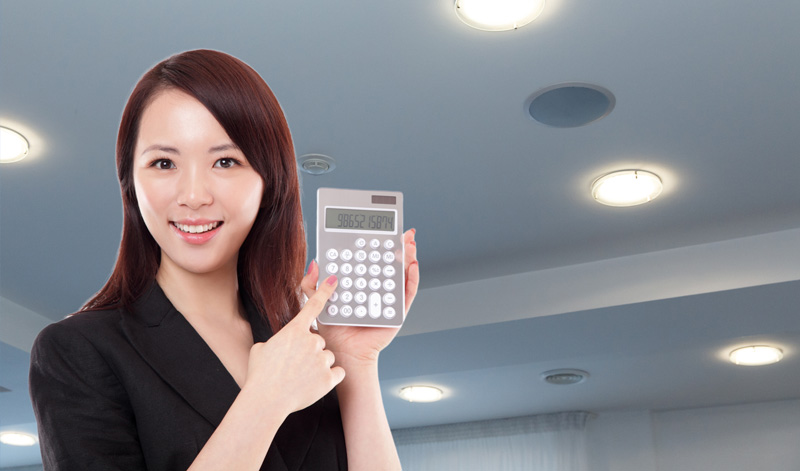
Lighting Controls: Calculating the Savings
Upgrading to high-efficiency lighting is a great way to reduce operating costs. However, any light — no matter how efficient — wastes energy and money lighting empty spaces. Adding controls can optimize savings and help preserve precious energy resources.
That sounds great, but lighting controls are an investment. It would be nice to know how much you’ll save.
To make things simple, let’s start room by room. For specific areas with varying foot traffic, use the following table. Apply these percentages to the lighting power draw and operating hours to estimate the savings. Examine fixture nameplate data to determine power draw.
Lighting controls can be applied effectively in any area with varying occupancy. The following lists the savings potential of occupancy sensors in specific areas:
- Private offices: 25% to 50%
- Open space offices: 20% to 25%
- Restrooms: 30% to 75%
- Corridors: 30% to 40%
- Storage areas and meeting rooms: 45% to 65%
For example, consider installing an occupancy sensor in a meeting room with six four-lamp F32T8 fixtures that normally are left on 3,000 hours per year — basically, all of the time. Each fixture draws 128 watts of input power; occupancy sensors in meeting rooms can save about 50% of normal energy consumption.
The following formula can be used to calculate the savings and payback:
Energy Savings = Power (kW) x Operating Hours
- 6 fixtures x 0.128 kW x 3,000 hours x 0.50 = 1,150 kWh a year
At an average rate of $0.11/kWh, you save about $127 a year in that room alone.
Cost Savings = Energy Savings (kWh) x Electric Rate
- 1,150 kWh x $0.11/kWh = $127
If the occupancy sensor costs $150 to install, the payback would be a little more than one year.
Payback = Installation Cost / Cost Savings
- $150 / $127 = 1.2 years
Add controls in multiple spaces and the savings can really add up. Enter your specific operating perimeters into this simple formula and it’s easy to demonstrate to customers the value of lighting controls.
Vacancy sensors save even more. Vacancy sensors automatically turn lights down or off if the space is unoccupied but require manually turning the lights back on again if someone enters the space. This avoids wasting energy by not triggering lights if someone just briefly reenters and leaves a space.
If you install vacancy sensors, you can apply an additional 20% to 30% to the savings estimated from a traditional occupancy sensor.